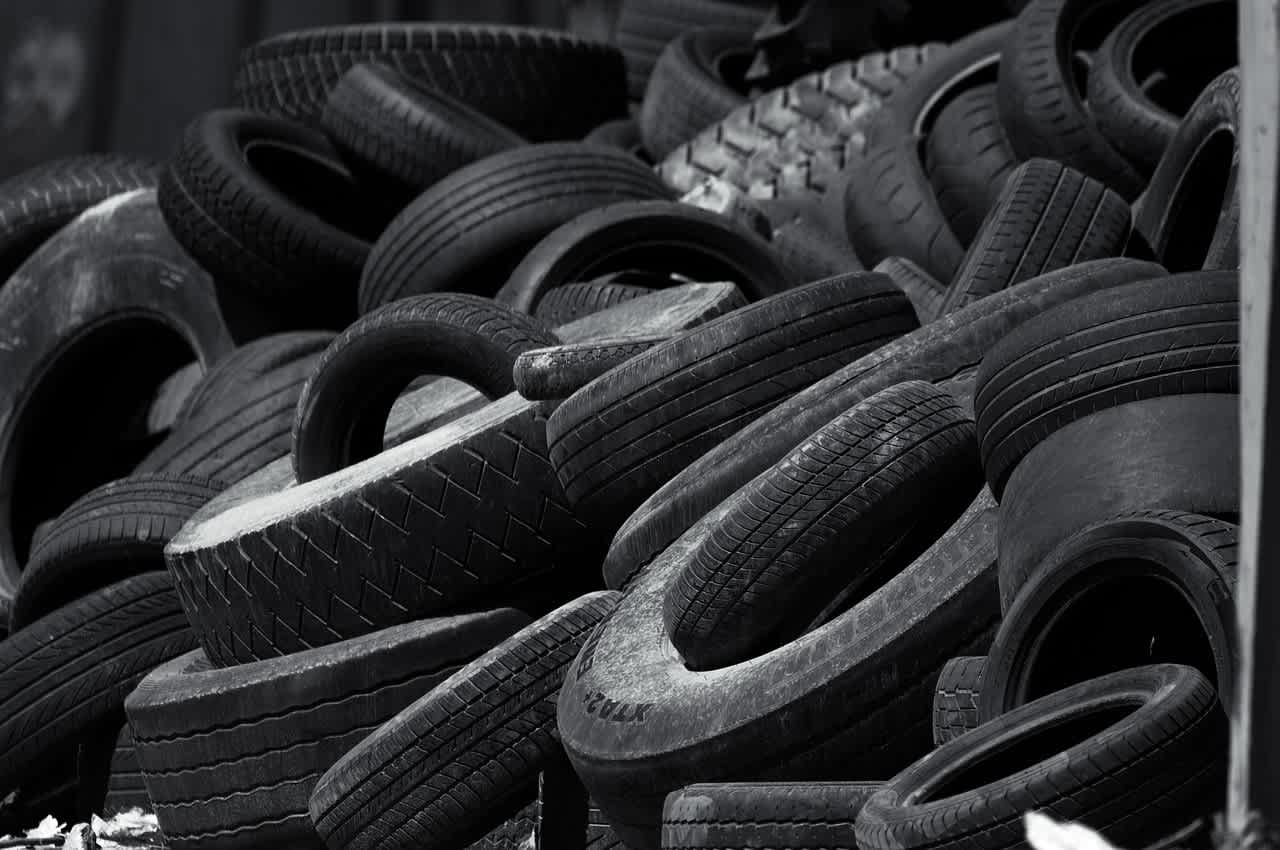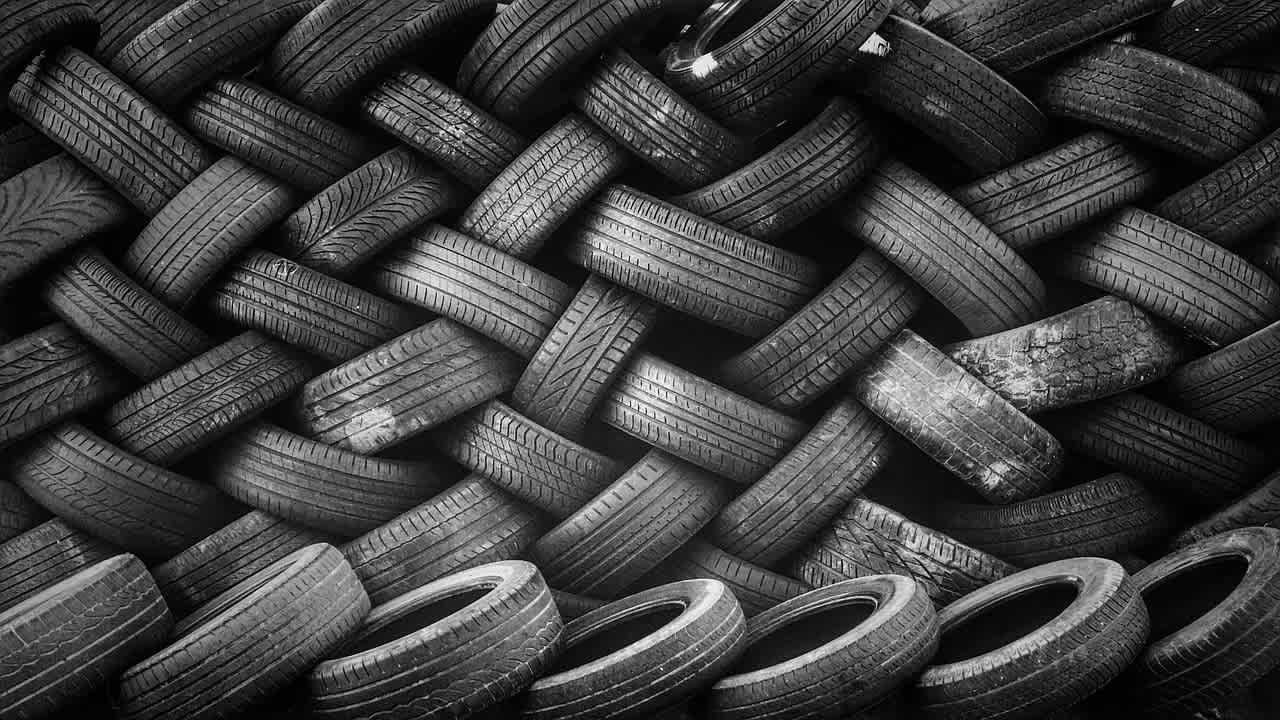Tire News & Information
Best price guarantee
Tire replacement coverage
24/7 roadside assistance
Easy returns

Tires have been an essential component of transportation for over a century, but their disposal has posed significant environmental challenges. As the number of vehicles on the road has increased, so has the volume of end-of-life tires that require proper management.
Tire recycling has emerged as a critical solution to this problem, offering a sustainable way to repurpose old tires and minimize their impact on the environment. This process not only helps to conserve natural resources but also reduces the amount of waste that ends up in landfills.
In recent years, advancements in tire recycling technologies and a growing awareness of the importance of sustainable practices have led to a significant increase in the recycling rate of end-of-life tires. Let's delve into the world of tire recycling and explore its history, current state, and future prospects.
What is Tire Recycling?

Tire recycling is the process of converting end-of-life or unwanted tires into materials that can be used in new products. When tires become worn, damaged, or no longer safe for use on vehicles, they become candidates for recycling. These tires are collected, sorted, and processed to extract valuable materials such as rubber, steel, and fiber.
The recycling process typically begins with the removal of the tire's sidewall to separate the rubber from the steel belts. The rubber is then shredded or ground into smaller pieces, known as crumb rubber. This crumb rubber can be used in a variety of applications, such as rubberized asphalt, playground surfaces, and athletic fields.
The steel and fiber components are also separated and recycled. The steel is melted down and used to create new steel products, while the fiber can be used as a fuel source or in the production of other materials.
Tire recycling not only diverts waste from landfills but also conserves natural resources by reducing the need for raw rubber and steel. By recycling tires, we can create a closed-loop system where the materials from end-of-life tires are used to create new products, reducing the environmental impact of tire production and disposal.
The Early Days of Tire Recycling
Rudimentary Beginnings (500 BCE - 1800s CE)
Long before the invention of rubber tires, ancient societies relied on basic solutions to improve the functionality of their wheels. They cushioned the wheels of carts and carriages with natural materials such as grass and mud, which provided a rudimentary level of comfort and protection. The industrial revolution of the 1800s brought about a significant shift with the introduction of rubber tires, first appearing on bicycles and later on automobiles. These tires offered remarkable improvements in performance and durability, yet they also introduced new environmental concerns. The absence of a proper disposal method for these durable products sparked a need for innovative solutions.
Landfills and Open Burning (1800s - Early 1900s)
As the popularity of rubber tires soared, so did the challenge of managing the waste they produced. During this era, the lack of recycling infrastructure led to tires being discarded in landfills, where they occupied immense space due to their resilience and volume. In an attempt to manage this waste, many tires were openly burned, a practice that released noxious fumes and contributed to air pollution. These early disposal methods underscored the pressing need for more sustainable practices, laying the foundation for future advancements in tire recycling technology and environmental conservation.
Innovations in Tire Recycling
Pyrolysis Development (1940-1960)
During the mid-20th century, the need for alternative rubber sources became critical due to wartime shortages. Pyrolysis emerged as an innovative solution, transforming how end-of-life tires were handled. This method involves heating rubber without oxygen, breaking it down into useful components like oils and carbon black. These byproducts found new life in various industrial applications, highlighting the potential of converting tire waste into valuable resources. Pyrolysis marked a significant step towards more sustainable practices, showcasing the utility of recycling technologies in reducing environmental impact.
Introduction of Tire Shredders (1970s)
The development of tire shredders in the early 1970s revolutionized the tire recycling process. These powerful machines enabled the efficient conversion of whole tires into smaller, usable pieces known as tire chips. Such advancements allowed for the easier separation of materials, facilitating their reuse in diverse applications from playground surfaces to construction materials. By enhancing the efficiency and practicality of recycling operations, shredders played a crucial role in expanding the market for recycled tire products and underscored the importance of innovative technology in sustainable waste management.
The Rise of Crumb Rubber and New Uses
Crumb Rubber Gains Popularity (1980s)
In the 1980s, tire recyclers began to explore innovative ways to utilize scrap tires, leading to the creation of crumb rubber. This material, produced by grinding tires into small granules, offered a multitude of practical applications. It quickly became favored for use in sports surfaces and playgrounds due to its durability and cushioning properties. The introduction of crumb rubber effectively transformed the perception of tire waste, presenting a valuable resource that could address environmental concerns while providing functional benefits.
Rubberized Asphalt and Civil Engineering (1991-2017)
The integration of crumb rubber into rubberized asphalt marked a significant advancement in road construction technology during the 1990s. This blend enhanced road performance by increasing longevity and reducing surface noise. In the United States, rubberized asphalt utilization surged, consuming approximately 220 million pounds of ground rubber each year, equating to the recycling of about 12 million tires. Beyond roadways, crumb rubber made its mark in civil engineering projects, where it served as an efficient material for embankment fills and landfill applications, highlighting its versatility and contribution to sustainable infrastructure development.
Tire Recycling Today

Stockpiles Shrink as Recycling Rises
The landscape of tire recycling has undergone a profound transformation in recent decades. From the staggering challenge of over a billion scrap tires in 1991, the U.S. has managed to reduce this figure to just 60 million by 2017. This achievement reflects a global commitment to integrating sustainable waste management practices into everyday operations. The progress is evident, with around 80% of tires now diverted from landfills and actively recycled. This advancement showcases the tire recycling industry's success in innovating and implementing efficient processes that significantly reduce environmental impact.
Top Uses for Recycled Tires
The array of applications for recycled tires continues to expand, offering diverse benefits across multiple sectors. A significant portion, approximately 43%, is transformed into tire-derived fuel, providing a cleaner energy option for cement kilns, pulp and paper mills, and electric utility boilers. This demonstrates the potential of recycled tires as a sustainable energy source. Additionally, ground rubber has become a staple in various industries, comprising 25% of the recycled tire market. Its applications extend to enhancing materials used in construction and infrastructure projects. Civil engineering projects also benefit, utilizing around 8% of scrap tires. These projects incorporate recycled materials into foundational structures and innovative designs, highlighting the versatile potential of repurposed tires in modern engineering.
The Future of Tire Recycling

The landscape of tire recycling is set for transformation as innovative research continually pushes the boundaries of what's possible. With a focus on improving efficiency, scientists are exploring new recycling methods that could revolutionize the industry. These advancements aim to refine the quality of recycled materials, broadening their potential uses and ensuring that recycled tires meet the demands of various applications.
Expanding Applications
The horizon for tire recycling is expanding with promising new applications that could redefine its role in various industries. Recycled tire materials are finding their way into construction, where they offer robust and sustainable alternatives for building infrastructure. These materials contribute to reducing the carbon footprint associated with traditional construction methods. In the realm of fashion, recycled tires are being creatively repurposed into eco-friendly footwear, showcasing their versatility and appeal. Additionally, synthetic materials derived from tires are being explored for their potential in creating high-performance products, offering new possibilities in numerous sectors.
Technological Advancements and Awareness
The future of tire recycling is closely tied to technological advancements and heightened awareness of sustainable practices. As new technologies emerge, they promise to make recycling processes more effective and accessible. This progress is driven by a rising global awareness of environmental issues and a growing commitment to sustainability. As industries and consumers alike recognize the importance of recycling, the demand for innovative solutions will continue to grow, propelling the tire recycling industry toward a more integrated and efficient future.
As we look to the future, the importance of tire recycling in creating a sustainable world becomes increasingly clear. By embracing innovative technologies and supporting the growth of this vital industry, we can all play a part in protecting our environment for generations to come. At SimpleTire, we are committed to making your tire shopping experience as easy and eco-friendly as possible, so shop for tires online with us today and find the best deals while contributing to a greener tomorrow.
Ready to find the perfect tires?
Search By